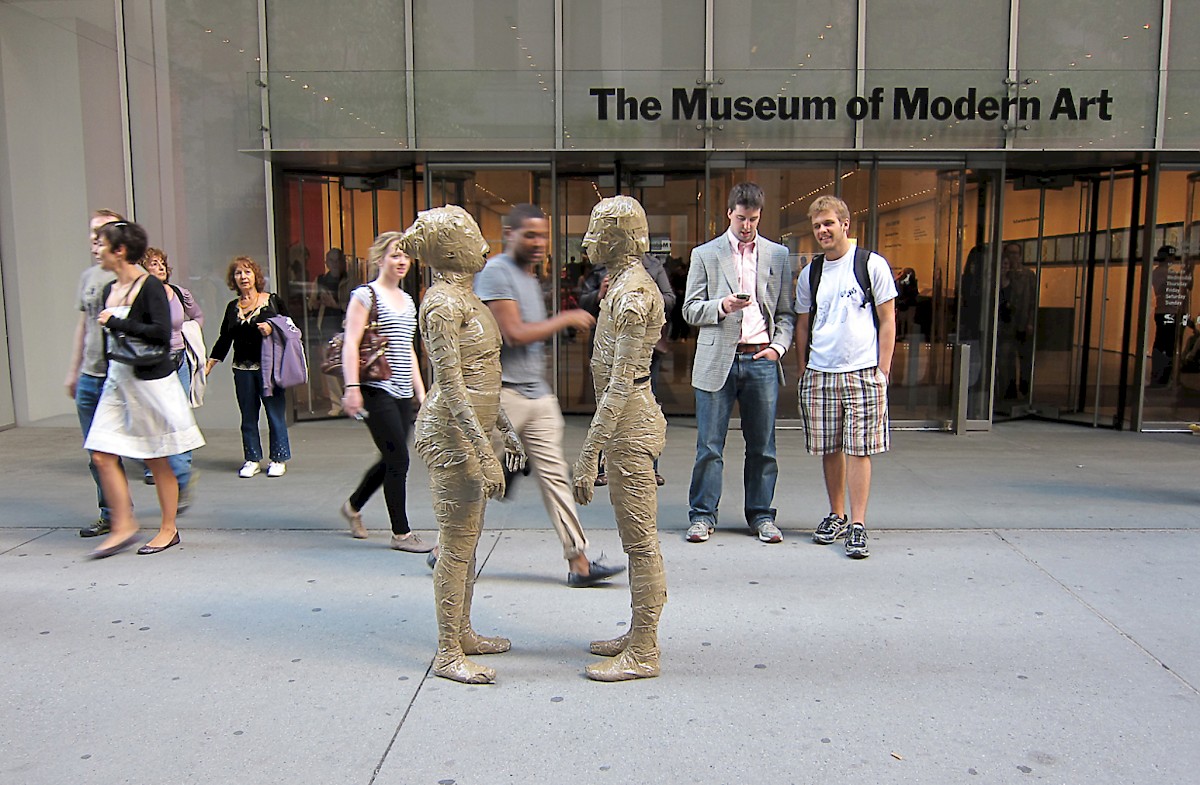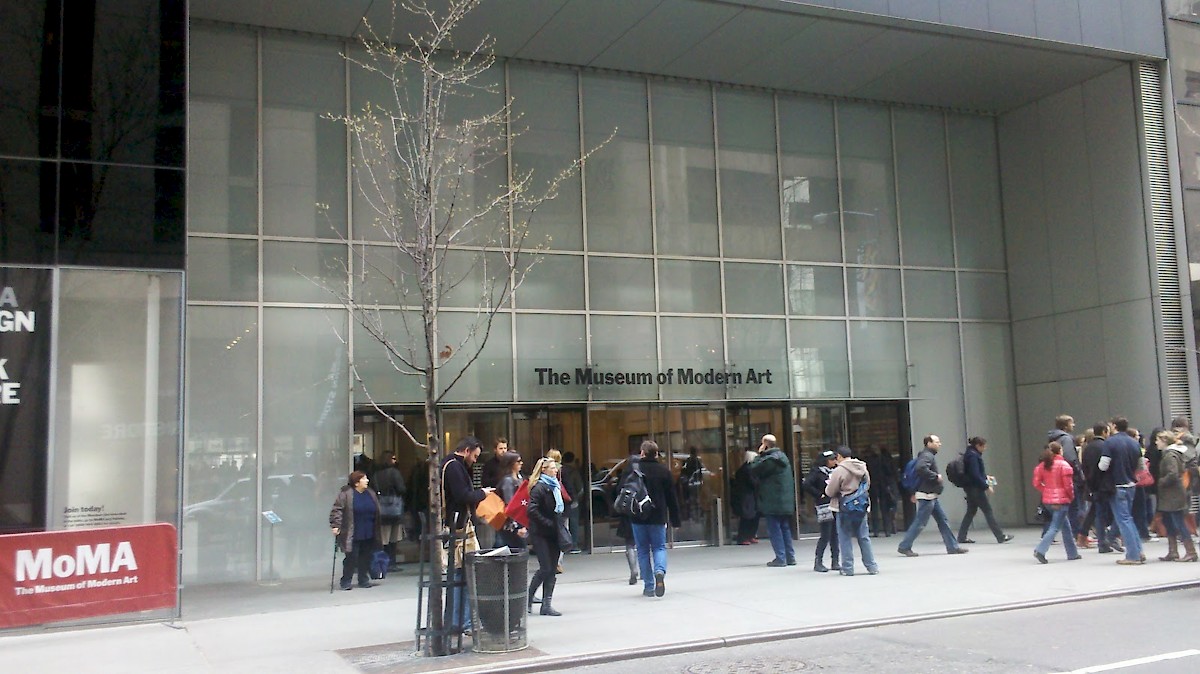#605 INSTALLATION: A DOCUMENTARY
IDENTIFY A PUBLIC SPACE
Fine art is a highly curated system that begins with free speech. Artistic opinion is visually expressed and is then, as a material product, vetted to fit within a particular institutional framework that will determine its value and voice. I've chosen the MoMA lobby and its immediate sidewalks to record the passing voice of commuters, tourists, and activists, to be ultimately put on display in the lobby space.
Free speech today faces a legitimacy crisis, through the shear amount of outlets provided to the public on a daily basis, specifically in a digital format. Opinion and voice have been commodified through social media and no longer articulate arguments, but simply form aggregates of confusion and impartiality. This installation is meant to reintroduce a sense of critique into the sharing process, occurring alongside and within, but not according to an established art institution.
The first floor and main entrance to MoMA is a through block lobby, allowing for the label of 'privately owned public space'. The lobby is opened for pedestrian traffic an hour before galleries are made open to the public. The lobby transforms at this point from passage to vestibule, and pedestrian traffic shifts primarily to 53rd and 54th street. The museum is open and free to the public from 4pm to 8pm every Friday.
DESIGN PROPOSAL
These three timeframes, where the museum lobby and its immediate sidewalk spaces shift in occupational value, offer a basic environment to test what formal gestures trigger the association of a space with action. Three large panels are presented to demonstrate how a simple plane can both define space and relay its intentions to the user.
IMPLEMENTATION
Funding would be required for the rental of three to four large video screens with recording capabilities. Logistical talks with MoMA would occur to determine the positioning of the devices on the sidewalk and within the lobby. Ideally the installation would operate over the span of one week.
TEAM
Lindsay Farrell is a graduate of the Syracuse University School of Architecture and currently works in New York City at LTL Architects. Her thesis work was concerned with the reappropriation of a U.S. military base in Okinawa according to latent and residual property rights and existing agricultural networks surrounding the site. Guerrilla farming and public protest were among the proposed activities to drive the new community owned land.
She is currently featured in Design Museum Boston's 'Green Patriot Posters' traveling exhibition for her graphic design work.






